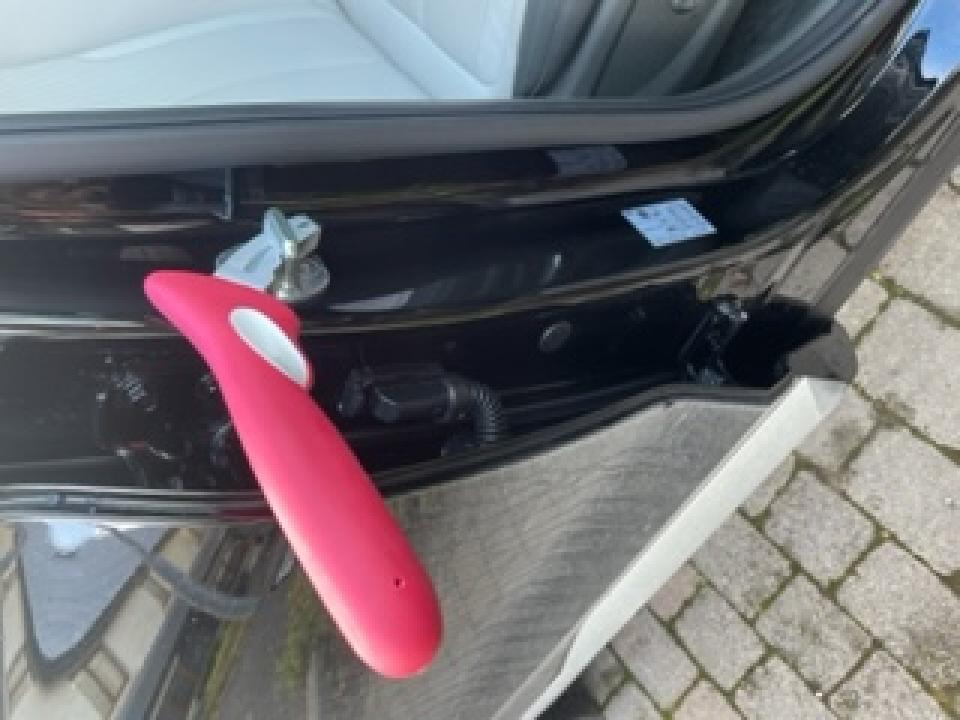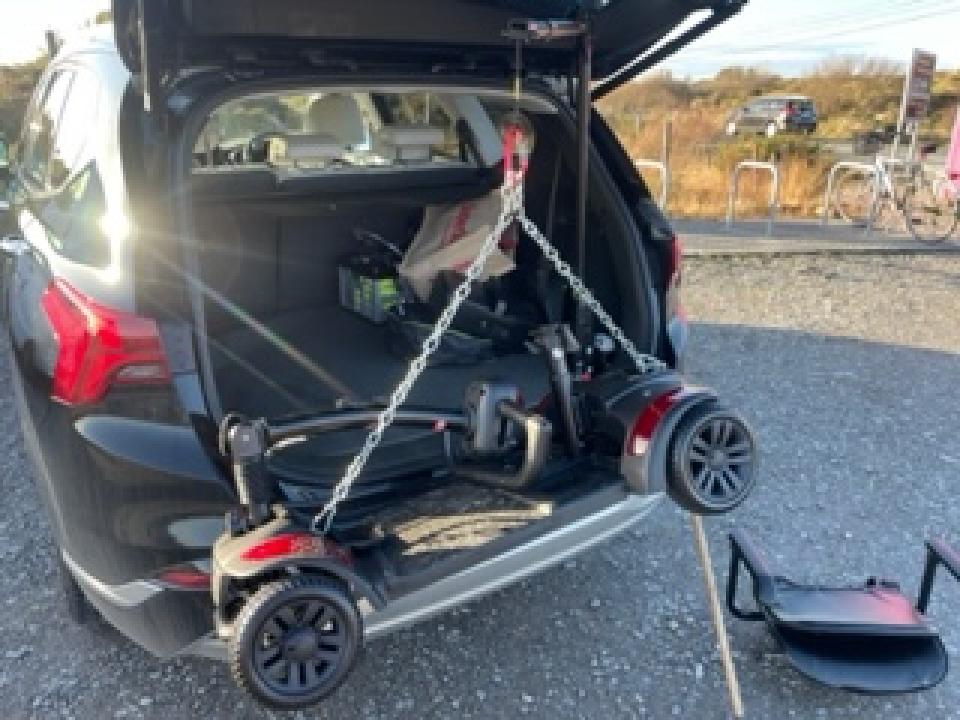There are a couple of things worth considering and I found talking with the local Occupational Therapist about my needs very informative. My legs are one of my main problems, so I needed to have hand controls fitted to use the accelerator and brake. This works best if you have an automatic car, but I did have one car that was manual and I had a button on the gear stick which activated the clutch. I found this very slow and it made it difficult to change gears quickly. I never went for this option again but if you are getting a second-hand car and if you want to control your costs this could be a good option.
On the steering wheel I have a steering knob fitted, which keeps one hand on the wheel, and the other on the brake/accelerator control. For some cars it is possible to get a more advanced knob which has buttons for the indicator, windshield wipers, and even the horn. This is much safer, especially when going through roundabouts.
The seat is very important as for long journeys if you don’t have suitable support, your legs could get very sore. I sat in many cars to see what the seat was like, and finally settled on four candidates, and I took these on a 24-hour test drive. This really helped as I was able to use the car on local roads and I could see how my body reacted to the seat.

Getting in and out of the car can be tricky as I have become less flexible and my legs are weakening. I had my last car for 14 years, and while it was great, it was too low to the ground. There were days when I thought I might have to stay in the car overnight as the effort of pulling myself out of the car was too much! The OT told me about a handy gadget to help with this, and it really helped (what was the handy gadget??). Now it isn’t as necessary, as my car is higher and I just ‘fall out’. So. Much. Easier

I also use a scooter for the days when my legs will not work at all. The boot in my old car made getting the scooter in and out very difficult, so when I was looking for my new one I made sure the scooter could fit easily into the boot, no lip in the way, My strength is deteriorating and I know I won’t be able to lift it in and out of the boot. Solution: I had a small crane fitted which makes putting it in and out so much easier. I don’t waste my precious spoons of energy on something a gadget to do.
As my car is new it has loads of very handy automations making driving less fatiguing. They are:
- Adaptive cruise control: This keeps my speed constant and if a car is driving slower in front of me, it matches their speed, so I only need to steer.
- Lane keeping assist: The car sees the road and will gently nudge the car into lane. This took a little getting accustomed to, but now it helps to reduce the burden of concentration, making driving much easier.
- Blind spot monitoring: Fantastic idea and the car alerts you if someone is in that spot you just cannot see. So much safer.
- Automatic headlights: These are great. They turn on your lights when it gets dark and they also have the added function of changing from full to dipped lights, automatically. This has helped me a lot driving in the dark and is one less thing to think about as I drive.
- Automatic windshield wipers: Like the headlights, I just don’t have to think about these anymore.
- Heated/cooled seats: I never realised how beneficial these are. The heat can help with spasticity and the cooling seats are great for our heatwaves. No sudden changes in temperatures, which really have an impact on me.
Think about the long term, if you will need a mobility scooter more often. Then you might need to consider a vehicle which allows you to drive it into the back of the vehicle, where you can either stay in that seat, or transfer into the seats in the car. Usually these are in bigger, van -size automobiles.
My car is essential as I live in rural Ireland. The public transport system doesn’t cater for mobility problems. Where would I store the scooter on a bus? And what would I do at the other end of the journey? Will you be able to find a taxi to bring you and your machine? The scheduling of the buses are also unrealistic.
Best of luck with your choice, and get advice from an OT and also from the company who will do the adaptations. I would also recommend using the professional fitter closest to where you live, as you might have to make some adaptations later in your driving life.
Safe journeys.
Add new comment